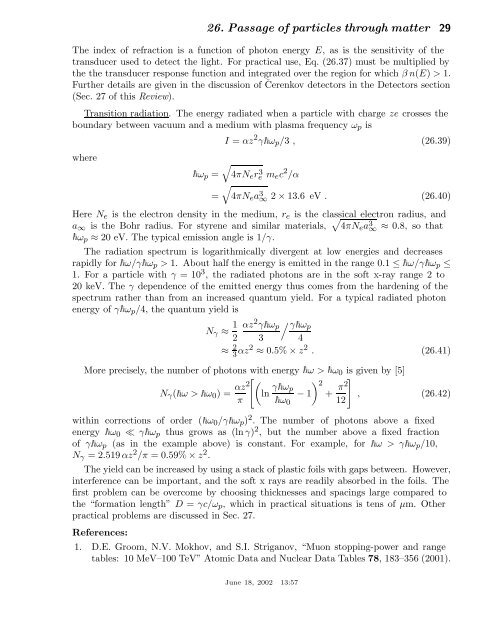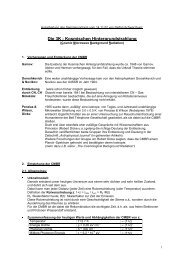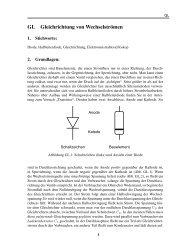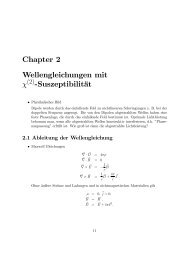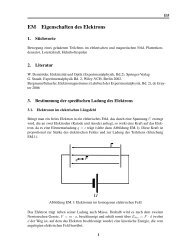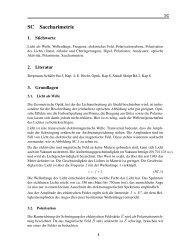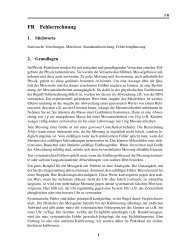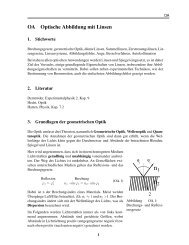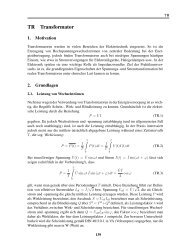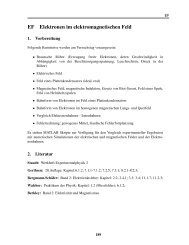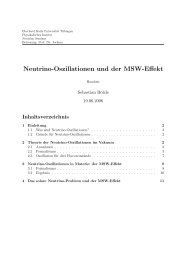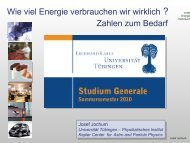26. passage of particles through matter - Particle Data Group
26. passage of particles through matter - Particle Data Group
26. passage of particles through matter - Particle Data Group
Create successful ePaper yourself
Turn your PDF publications into a flip-book with our unique Google optimized e-Paper software.
<strong>26.</strong> Passage <strong>of</strong> <strong>particles</strong> <strong>through</strong> <strong>matter</strong> 29<br />
The index <strong>of</strong> refraction is a function <strong>of</strong> photon energy E, as is the sensitivity <strong>of</strong> the<br />
transducer used to detect the light. For practical use, Eq. (<strong>26.</strong>37) must be multiplied by<br />
the the transducer response function and integrated over the region for which βn(E)>1.<br />
Further details are given in the discussion <strong>of</strong> Čerenkov detectors in the Detectors section<br />
(Sec. 27 <strong>of</strong> this Review).<br />
Transition radiation. The energy radiated when a particle with charge ze crosses the<br />
boundary between vacuum and a medium with plasma frequency ω p is<br />
I = αz 2 γ~ω p /3 , (<strong>26.</strong>39)<br />
where<br />
√<br />
~ω p = 4πN e re 3 m e c 2 /α<br />
√<br />
= 4πN e a 3 ∞ 2 × 13.6 eV. (<strong>26.</strong>40)<br />
Here N e is the electron density in the medium, r e is the classical electron radius, and<br />
a ∞ is the Bohr radius. For styrene and similar materials, √ 4πN e a 3 ∞ ≈ 0.8, so that<br />
~ω p ≈ 20 eV. The typical emission angle is 1/γ.<br />
The radiation spectrum is logarithmically divergent at low energies and decreases<br />
rapidly for ~ω/γ~ω p > 1. About half the energy is emitted in the range 0.1 ≤ ~ω/γ~ω p ≤<br />
1. For a particle with γ =10 3 , the radiated photons are in the s<strong>of</strong>t x-ray range 2 to<br />
20 keV. The γ dependence <strong>of</strong> the emitted energy thus comes from the hardening <strong>of</strong> the<br />
spectrum rather than from an increased quantum yield. For a typical radiated photon<br />
energy <strong>of</strong> γ~ω p /4, the quantum yield is<br />
N γ ≈ 1 αz 2 γ~ω<br />
/ p γ~ωp<br />
2 3 4<br />
≈ 2 3 αz2 ≈ 0.5% × z 2 . (<strong>26.</strong>41)<br />
More precisely, the number <strong>of</strong> photons with energy ~ω >~ω 0 is given by [5]<br />
[ (<br />
N γ (~ω >~ω 0 )= αz2 ln γ~ω ) ] 2<br />
p<br />
− 1 + π2<br />
, (<strong>26.</strong>42)<br />
π ~ω 0 12<br />
within corrections <strong>of</strong> order (~ω 0 /γ~ω p ) 2 . The number <strong>of</strong> photons above a fixed<br />
energy ~ω 0 ≪ γ~ω p thus grows as (lnγ) 2 , but the number above a fixed fraction<br />
<strong>of</strong> γ~ω p (as in the example above) is constant. For example, for ~ω >γ~ω p /10,<br />
N γ =2.519 αz 2 /π =0.59% × z 2 .<br />
The yield can be increased by using a stack <strong>of</strong> plastic foils with gaps between. However,<br />
interference can be important, and the s<strong>of</strong>t x rays are readily absorbed in the foils. The<br />
first problem can be overcome by choosing thicknesses and spacings large compared to<br />
the “formation length” D = γc/ω p , which in practical situations is tens <strong>of</strong> µm. Other<br />
practical problems are discussed in Sec. 27.<br />
References:<br />
1. D.E. Groom, N.V. Mokhov, and S.I. Striganov, “Muon stopping-power and range<br />
tables: 10 MeV–100 TeV” Atomic <strong>Data</strong> and Nuclear <strong>Data</strong> Tables 78, 183–356 (2001).<br />
June 18, 2002 13:57


